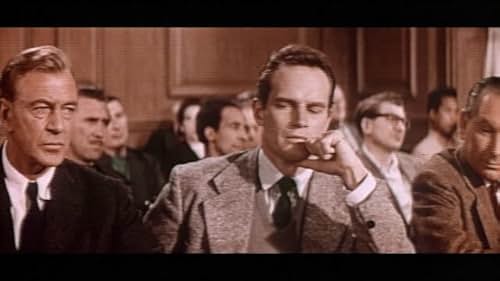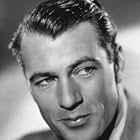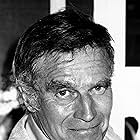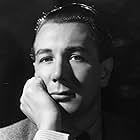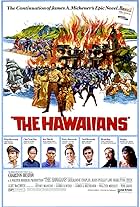A disgraced merchant marine officer elects to stay aboard his sinking cargo ship in order to prove the vessel was deliberately scuttled and, as a result, vindicate his good name.A disgraced merchant marine officer elects to stay aboard his sinking cargo ship in order to prove the vessel was deliberately scuttled and, as a result, vindicate his good name.A disgraced merchant marine officer elects to stay aboard his sinking cargo ship in order to prove the vessel was deliberately scuttled and, as a result, vindicate his good name.
- Awards
- 1 nomination total
Alexander Archdale
- Lloyd's Counsel
- (uncredited)
Jack Armstrong
- Court of Enquiry Clerk
- (uncredited)
Paul Beradi
- Court of Enquiry Clerk
- (uncredited)
Wallace Bosco
- Courtroom Spectator
- (uncredited)
Paul Bryar
- Port Official
- (uncredited)
- Director
- Writers
- All cast & crew
- Production, box office & more at IMDbPro
Storyline
Did you know
- TriviaProduction had to be closed down several times due to Gary Cooper's frequent illnesses. This was Cooper's penultimate movie. He was diagnosed with advanced metastatic prostate cancer the following year.
- GoofsPatch and Sands enter the sunken portion of the Mary Deare using SCUBA equipment and are followed by Higgins and crew members by observing their underwater lights. Closeups show large amounts of bubbles from the SCUBA in the underwater shot but no bubbles seen by Higgins on the surface, which would have made their locations obvious.
- Quotes
Gideon Patch: You listen! I didn't ask you to come on board, and I'm in command here! Now, if you don't like it, you can go over the side and swim!
- ConnectionsEdited into Logan's Run (1976)
Featured review
"The Wreck of the Mary Deare" is a British film, made by a British director, based upon a novel by a British writer (Hammond Innes), mostly set either in Britain or aboard a ship in the English Channel, and with a predominantly British cast. And yet it stars two major American actors, Gary Cooper and Charlton Heston. The reason, apparently, is that Alfred Hitchcock was originally slated to direct the movie, but pulled out, claiming that the novel couldn't be filmed without turning the story into "a boring courtroom drama." (Hitchcock was fascinated by crime, especially the psychology of crime, but the criminal justice process, whether it involved police work or the courtroom procedure, held little interest for him). The task of directing the film eventually went to another British director, Michael Anderson.
The film's central theme, however, is a characteristically Hitchcockian one- the fight of a man wrongly accused to clear his name. The man in question is Gideon Patch, an American-born sea captain with the British Merchant Navy, who is accused of incompetence after his crew mutiny and abandon ship, leaving the vessel to sink; Patch alone remains on board desperately trying to save the ship. The structure of the film owes something to that of "The Caine Mutiny" from a few years earlier in that the action begins at sea and then moves to a court hearing on land. This film, however, begins in medias res when a salvage man, John Sands, boards the stricken and apparently abandoned "Mary Deare" in the middle of a storm only to find that Captain Patch is still on board. We never actually see the mutiny or the earlier part of the voyage, even in flashback, but hear about them later, both in the conversations between Patch and Sands and at the subsequent court of inquiry into the loss of the vessel. In order to clear his name, Patch needs to prove that the ship was sabotaged and the mutiny arranged by the owners as part of an insurance fraud.
This was to be Gary Cooper's penultimate film- his last, "The Naked Edge" from two years later was also directed by Anderson- and he gives a fine performance. When we first see Patch on board the stricken vessel he first seems dangerously obsessive, perhaps even mad, but we later come to realise that he is one of the few men of integrity in this film. He receives good support from Charlton Heston as Sands. By 1959 Heston was a huge star- this was also the year of "Ben-Hur"- but he occasionally agreed to appear in supporting roles to work with a director or co-star he particularly admired. (For example, he had taken a fairly minor role in "The Big Country" just for the experience of working with William Wyler). There is also a good contribution from a young, per-stardom Richard Harris as Higgins, the ringleader of the mutineers.
Anderson was something of an uneven director. He is most famous for having made "The Dam Busters", one of the most beloved of all British war films, but he also has some fairly second-rate entries on his CV, such as "Logan's Run" and "Orca" (which also starred Harris). "The Wreck of the Mary Deare" is also in some ways an uneven film. In one respect Hitchcock was correct; the courtroom scenes are not very interesting. Cecil Parker as the Chairman of the Inquiry is particularly dull. The main interest lies in the action sequences, particularly those near the beginning in which Patch and Sands are desperately trying to save both the storm-battered ship and their own lives. Although the film was made more than fifty years ago, the special effects are very well done and these sequences remain thrilling even today. The look of the film, shot in a muted palette dominated by greys, browns and greens, also seems appropriate to the film's theme of dark deeds and conspiracies.
It would have been interesting to see how Hitchcock might have treated the story. His film would probably have been very different from Anderson's, but in one respect I am glad he never got to make it. After dropping out of this film he moved onto a new project which eventually became "North by Northwest", one of his greatest achievements. 7/10
The film's central theme, however, is a characteristically Hitchcockian one- the fight of a man wrongly accused to clear his name. The man in question is Gideon Patch, an American-born sea captain with the British Merchant Navy, who is accused of incompetence after his crew mutiny and abandon ship, leaving the vessel to sink; Patch alone remains on board desperately trying to save the ship. The structure of the film owes something to that of "The Caine Mutiny" from a few years earlier in that the action begins at sea and then moves to a court hearing on land. This film, however, begins in medias res when a salvage man, John Sands, boards the stricken and apparently abandoned "Mary Deare" in the middle of a storm only to find that Captain Patch is still on board. We never actually see the mutiny or the earlier part of the voyage, even in flashback, but hear about them later, both in the conversations between Patch and Sands and at the subsequent court of inquiry into the loss of the vessel. In order to clear his name, Patch needs to prove that the ship was sabotaged and the mutiny arranged by the owners as part of an insurance fraud.
This was to be Gary Cooper's penultimate film- his last, "The Naked Edge" from two years later was also directed by Anderson- and he gives a fine performance. When we first see Patch on board the stricken vessel he first seems dangerously obsessive, perhaps even mad, but we later come to realise that he is one of the few men of integrity in this film. He receives good support from Charlton Heston as Sands. By 1959 Heston was a huge star- this was also the year of "Ben-Hur"- but he occasionally agreed to appear in supporting roles to work with a director or co-star he particularly admired. (For example, he had taken a fairly minor role in "The Big Country" just for the experience of working with William Wyler). There is also a good contribution from a young, per-stardom Richard Harris as Higgins, the ringleader of the mutineers.
Anderson was something of an uneven director. He is most famous for having made "The Dam Busters", one of the most beloved of all British war films, but he also has some fairly second-rate entries on his CV, such as "Logan's Run" and "Orca" (which also starred Harris). "The Wreck of the Mary Deare" is also in some ways an uneven film. In one respect Hitchcock was correct; the courtroom scenes are not very interesting. Cecil Parker as the Chairman of the Inquiry is particularly dull. The main interest lies in the action sequences, particularly those near the beginning in which Patch and Sands are desperately trying to save both the storm-battered ship and their own lives. Although the film was made more than fifty years ago, the special effects are very well done and these sequences remain thrilling even today. The look of the film, shot in a muted palette dominated by greys, browns and greens, also seems appropriate to the film's theme of dark deeds and conspiracies.
It would have been interesting to see how Hitchcock might have treated the story. His film would probably have been very different from Anderson's, but in one respect I am glad he never got to make it. After dropping out of this film he moved onto a new project which eventually became "North by Northwest", one of his greatest achievements. 7/10
- JamesHitchcock
- Aug 22, 2013
- Permalink
- How long is The Wreck of the Mary Deare?Powered by Alexa
Details
Box office
- Budget
- $2,596,000 (estimated)
- Runtime1 hour 45 minutes
- Aspect ratio
- 2.35 : 1
Contribute to this page
Suggest an edit or add missing content

Top Gap
By what name was The Wreck of the Mary Deare (1959) officially released in India in English?
Answer
